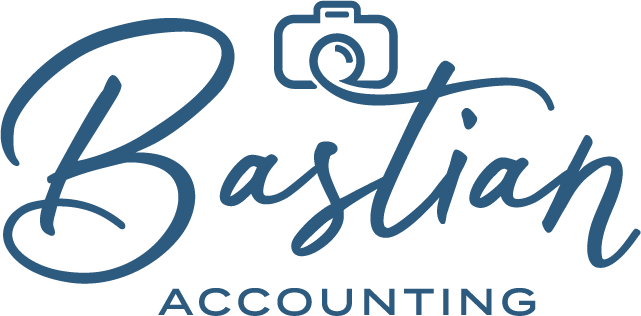There's No Such Thing as "Business Taxes" – How Different Business Structures Actually Impact Your Tax Return
There's No Such Thing as "Business Taxes" – How Different Business Structures Actually Impact Your Tax Return
As a photographer building your business, you've probably heard people talk about "business taxes" as if they're completely separate from personal taxes. I'd like to clear up a common misconception: there's actually no such thing as "business taxes" in the way many people think.
Instead, the business structure you choose determines how your business income flows through to your personal tax return. Let's break down how this works for each business structure.
Sole Proprietorship
Most photographers start here. As a sole proprietor:
Your business isn't a separate tax entity from you
You report business income and expenses on Schedule C of your personal tax return (Form 1040)
You pay self-employment tax (15.3%) on your net business income, which covers Social Security and Medicare
All business profits flow directly to your personal tax return, regardless of whether you leave money in your business account
Single-Member LLC (Limited Liability Company)
This provides liability protection but typically doesn't change your tax situation:
By default, the IRS treats a single-member LLC as a "disregarded entity" for tax purposes
You still file Schedule C on your personal tax return
You still pay self-employment tax on your net business income
The LLC itself doesn't file a separate tax return
Multi-Member LLC
When you have business partners:
By default, the IRS treats a multi-member LLC as a partnership
The LLC files an informational return (Form 1065)
Each partner receives a Schedule K-1 showing their share of profits/losses
You report this income on your personal tax return (Schedule E)
You still pay self-employment tax on your share of the business profits
Important deadline note: Form 1065 is due March 15th, a full month before personal tax returns
S-Corporation
This is where things get interesting for many growing photography businesses:
The S-Corp files its own informational tax return (Form 1120-S)
You must take a "reasonable salary" as a W-2 employee of your corporation
Your salary is subject to payroll taxes (similar to self-employment tax)
Any remaining profits can be distributed as "distributions" not subject to self-employment/payroll tax
Both salary and distributions flow to your personal tax return
Important deadline note: Form 1120-S is due March 15th, a full month before personal tax returns
C-Corporation
Rarely used by photographers because of "double taxation":
The corporation pays its own income tax (Form 1120)
You pay personal income tax on any salary you receive
If the corporation distributes dividends, you pay tax on those again
The corporation's income doesn't automatically flow to your personal return
The Bottom Line
No matter what business structure you choose, the profits ultimately flow to your personal tax return in some form. The difference is HOW they flow through and what taxes apply along the way.
When photographers talk about "business taxes," they're typically referring to:
Self-employment tax (for sole proprietors and most LLCs)
Estimated tax payments (quarterly payments based on expected income)
Sales tax (collected from clients and remitted to the state)
Employment taxes (if you have employees)
Understanding this flow-through concept is crucial for making smart decisions about your business structure and tax planning. The right choice depends on your current profit level, growth plans, and overall financial situation.
When Should You Change Your Business Structure?
The business structure that works for you today might not be the best fit as your photography business grows. Here are some common signals it might be time to consider a change:
Your annual profit has increased significantly
You're paying more in self-employment taxes than necessary
You need better liability protection
You're planning to bring on business partners
You want to build business credit separate from personal credit
Your accountant has mentioned potential tax advantages to a different structure
Need More Personalized Guidance?
If you're feeling overwhelmed trying to figure out which business structure is right for you now and when you should consider changing it, you're not alone. This is one of the most common questions we get from photographers.
That's why we've created our comprehensive "Business Structure for Photographers" course as part of the Financially Focused Collective. This course walks you through:
Which structure makes sense at different revenue levels
How to know when it's time to switch from sole proprietor to LLC
When an S-Corporation election might save you thousands in taxes
Step-by-step guidance for setting up each business structure
The exact costs and paperwork involved in each transition
State-specific considerations for your photography business
Rather than making this critical decision based on what other photographers are doing or generic online advice, get photographer-specific guidance that considers your unique business situation.
Join our Financially Focused Collective today to access this course and a library of other financial resources created specifically for photographers. Your photography talent deserves a business structure that protects your assets and optimizes your tax situation!
[Join the Financially Focused Collective]
Questions about your photography business structure? Click on the “Chat With us” and ask!


